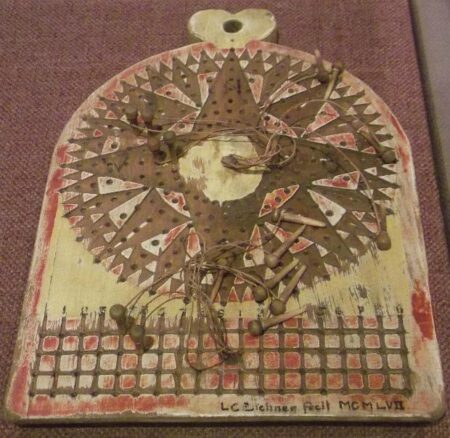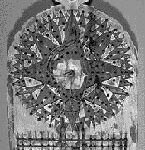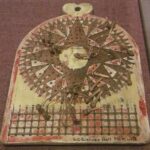Traverse Board
Tool
Age of Discovery
Quick Facts:
The Traverse Board was used to record the direction a ship was sailing along with the corresponding speed of the ship for the same four hour period.
The Traverse Board was developed solely for maritime exploration. Mariners had tools to determine direction and speed, but they needed a way to record and remember their measurements over a period of time. The Traverse Board did just that. A compass rose with 32 different points was fixed to the top of a wooden board. From the center of the rose, eight holes extended out to each compass point. This formed eight concentric circles and represented eight 30-minute timeframes or the four hours of a watch. Every half hour the direction the ship was sailing would be measured using a compass and would be recorded by placing a small wooden peg in the corresponding hole on the Traverse Board. The first half hour would have a peg put into a hole in the first circle from the center. The second half hour, a total of one hour, would have a peg put into a hole in the second circle from the center, and so on.
At the bottom of the Traverse Board, beneath the compass rose, were four horizontal rows of holes. These rows were divided between a left and right side and each row represented thirty minutes of time. The holes also lined up in vertical columns representing speed (1 knot, 2 knots, 3 knots, etc.) These worked with the same peg-in-hole method as on the compass rose, but instead of recording direction, these rows were used to record speed. The first row would be used to record the speed at thirty minutes into a watch; the second row recorded speed after an hour, the third row, the speed after an hour and a half and so on. After the fourth row on the left side was used, recording would continue on the top row on the right side.
After four hours, when the watch was over, the board would be cleared and recording would begin again.
- Traverse Board, Reproduction, Donated by L. Eichner, 1957,The Mariners’ Museum (1957.19).
- Traverse Board, from The Mariners’ Museum



